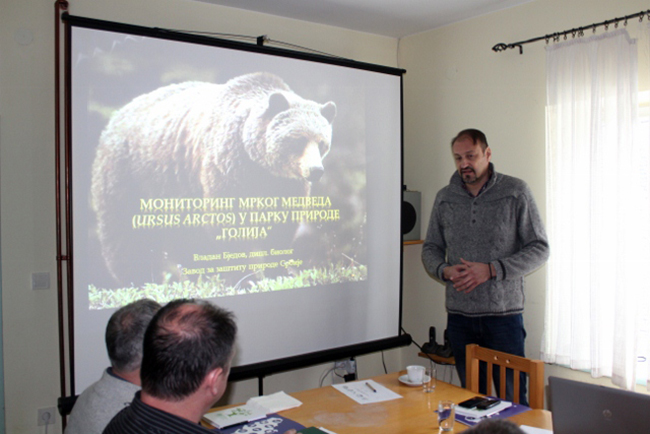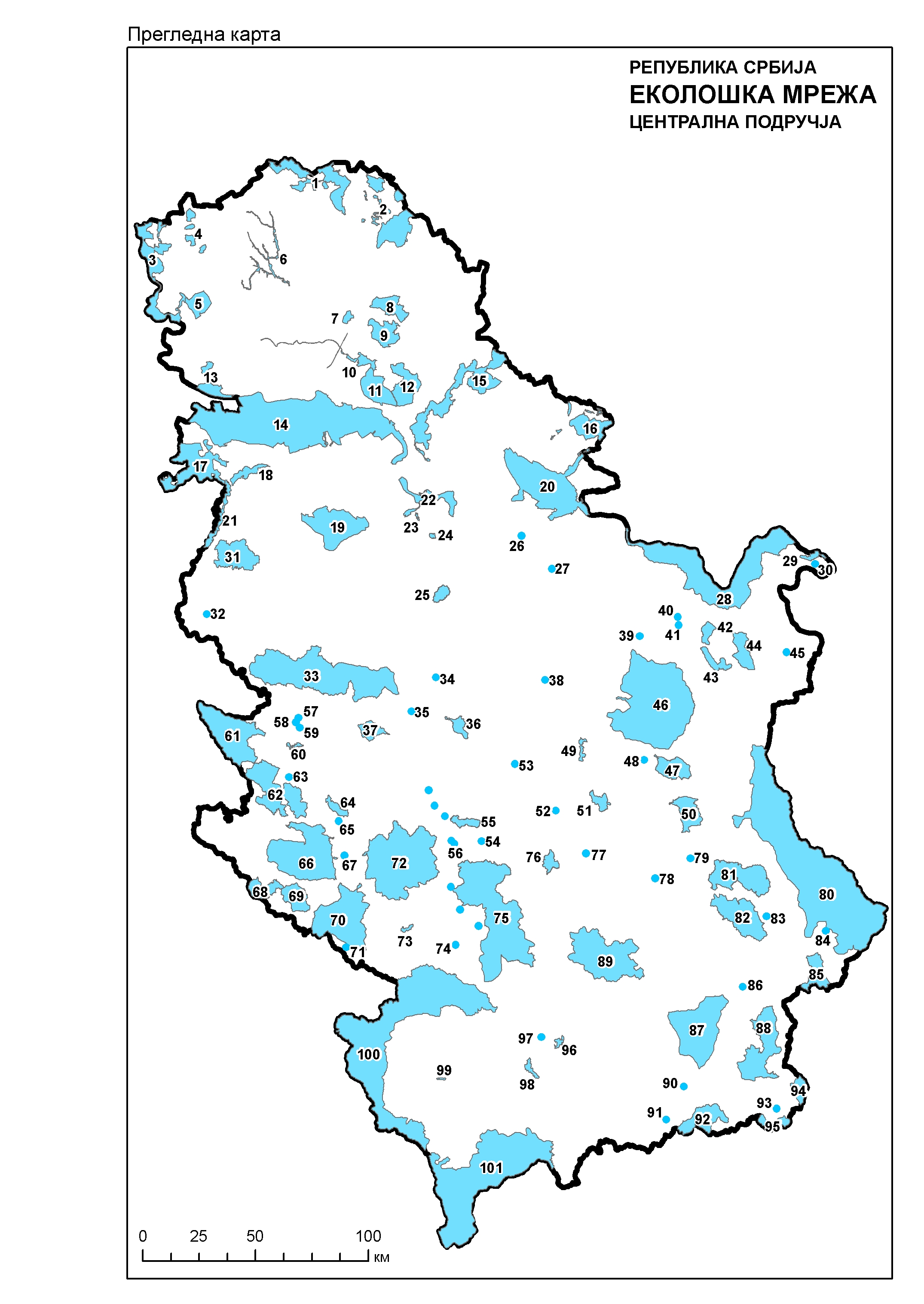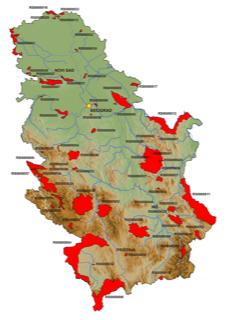ConnectGREEN - Expert in large mammals on Serbia's journey towards establishing an ecological network
25-11-2019
 November 25th 2019. Serbia. In an interview for ConnectGREEN, Mr. Vladan Bjedov, expert in large mammals and ecological connectivity at the Institute for Nature Conservation of Serbia, discusses the status of the ecological network in his country. Serbia has already taken important steps in this direction, yet there are still measures to be taken in order to ensure connectivity for wildlife in “Carpathian Serbia”, a region considered a “hot spot” for mammals.
November 25th 2019. Serbia. In an interview for ConnectGREEN, Mr. Vladan Bjedov, expert in large mammals and ecological connectivity at the Institute for Nature Conservation of Serbia, discusses the status of the ecological network in his country. Serbia has already taken important steps in this direction, yet there are still measures to be taken in order to ensure connectivity for wildlife in “Carpathian Serbia”, a region considered a “hot spot” for mammals.
Interview by Mrs. Sanja Simonovic Alfirevic and Marina Nenkovic-Riznic
ConnectGREEN: Could you emphasize the key problems for establishing and implementing an ecological network and ecological corridors in Serbia?
Mr. Vladan Bjedov: Ecological network of Serbia is established, but there are certain problems with the corridors which are mostly not determined.
 Problems in that area are identified as lack of unified monitoring system on national/state level; deficiency in experts and specialists; lack of financing; non-established geodatabase on the national/regional/local level and the most important - lack of efficient cooperation between institutions/sectors in nature conservation and spatial/urban planning.
Problems in that area are identified as lack of unified monitoring system on national/state level; deficiency in experts and specialists; lack of financing; non-established geodatabase on the national/regional/local level and the most important - lack of efficient cooperation between institutions/sectors in nature conservation and spatial/urban planning.
ConnectGREEN: Are the monitoring of conditions and changes in the ecological network and ecological corridors adequate from the point of view of nature protection?
Mr. Vladan Bjedov: Regular activities of the Institute for Nature Conservation of Serbia are, among the others, monitoring the present state (current status) and changes in ecological network and ecological corridors. From the point of nature conservation and protection, it is obviously necessary to establish adequate and up-to-date monitoring system on national/regional/local level, but due to the mentioned problems it is foreseen in the future period.
ConnectGREEN: What significant activities related to the identification of ecological corridors have been carried out on the territory of Serbia in the previous period?
Mr. Vladan Bjedov: During the process of establishment of the Ecological network in Serbia, some previously recognized ecological corridors were mapped. Even more, for the territory of Vojvodina Province, the more detailed mapping was done, due to some territorial peculiarities of Vojvodina (mostly agricultural ecosystems and landscapes);
 Before the establishment of the Ecological network, the Republic of Serbia has established EMERALD network. Each of the 61 identified areas meet the basic criteria for nomination for the EMERALD area. In each of these areas there are important habitats and species populations defined by the Bern Convention as species and habitats of priority for protection at the European level. Some of the EMERALD sites in the Carpathians in Serbia are at the same time the most important areas for the conservation of big mammals in Serbia.
Before the establishment of the Ecological network, the Republic of Serbia has established EMERALD network. Each of the 61 identified areas meet the basic criteria for nomination for the EMERALD area. In each of these areas there are important habitats and species populations defined by the Bern Convention as species and habitats of priority for protection at the European level. Some of the EMERALD sites in the Carpathians in Serbia are at the same time the most important areas for the conservation of big mammals in Serbia.
ConnectGREEN: Are there any territories in Serbia in which the mapping of ecological corridors has been carried out and how are the data identified and updated?
Mr. Vladan Bjedov: For the purposes of establishing the Ecological network of Serbia, some corridors were mapped, but more in general way, not in details. So, on the territory of Serbia corridors like flows of bigger rivers were pointed out as a migratory corridors (mainly for birds and in some way for bats), while in the Vojvodina Province a quite detailed mapping was done, with local corridors and connections of larger or smaller patches of natural and semi-natural ecosystems and landscapes.
Collection and update of the data are considered as regular activity of different organizations, mostly Institute for Nature Conservation of Serbia and Institute for Nature Conservation of Vojvodina Province and some scientific institutions and governmental bodies as well. The main problem is that of the mentioned institutions are strictly dedicated to the identifications and monitoring of ecological corridors and do not have a specialized experts team.
ConnectGREEN: What types of large carnivores can be found in the territory of the Carpathian Serbia and how is it possible to monitor their movements? Do you think that the ConnectGREEN project will significantly contribute to the identification of corridors and provide an opportunity to improve the number of individuals in the Carpathian Serbia?
Mr. Vladan Bjedov: Geographical region designated as a “Carpathian Serbia” is, up to now, defined as a “hot spot” for mammals. According to that, almost all of so called “big mammalian” species could be find in the Serbian part of Carpathians such as brown bear (Ursus arctos), grey wolf (Canis lupus), lynx (Lynx lynx), golden jackal (Canis aureus) and red deer (Cervus elaphus), roe deer (Capreolus capreolus), wild boar (Sus scrofa) and chamois (Rupicapra rupicapra) as well. Also, two alochtonous species could be found in this region, fallow deer (Dama dama) and mouflon (Ovis aries) – for now just in some hunting enclosures. The movements (seasonal and dispersal ones) of the certain species could be monitored by some “classic” methods like mapping of observations in the field, seasonal or permanent counting and surveys, or by advanced techniques like satellite tracking.
ConnectGREEN project could (and should) contribute significantly to the identification of the corridors on the national and international level (having in mind Carpathian region), as a part of the (existing and future) transboundary cooperation in integrated management of the large carnivore species.
